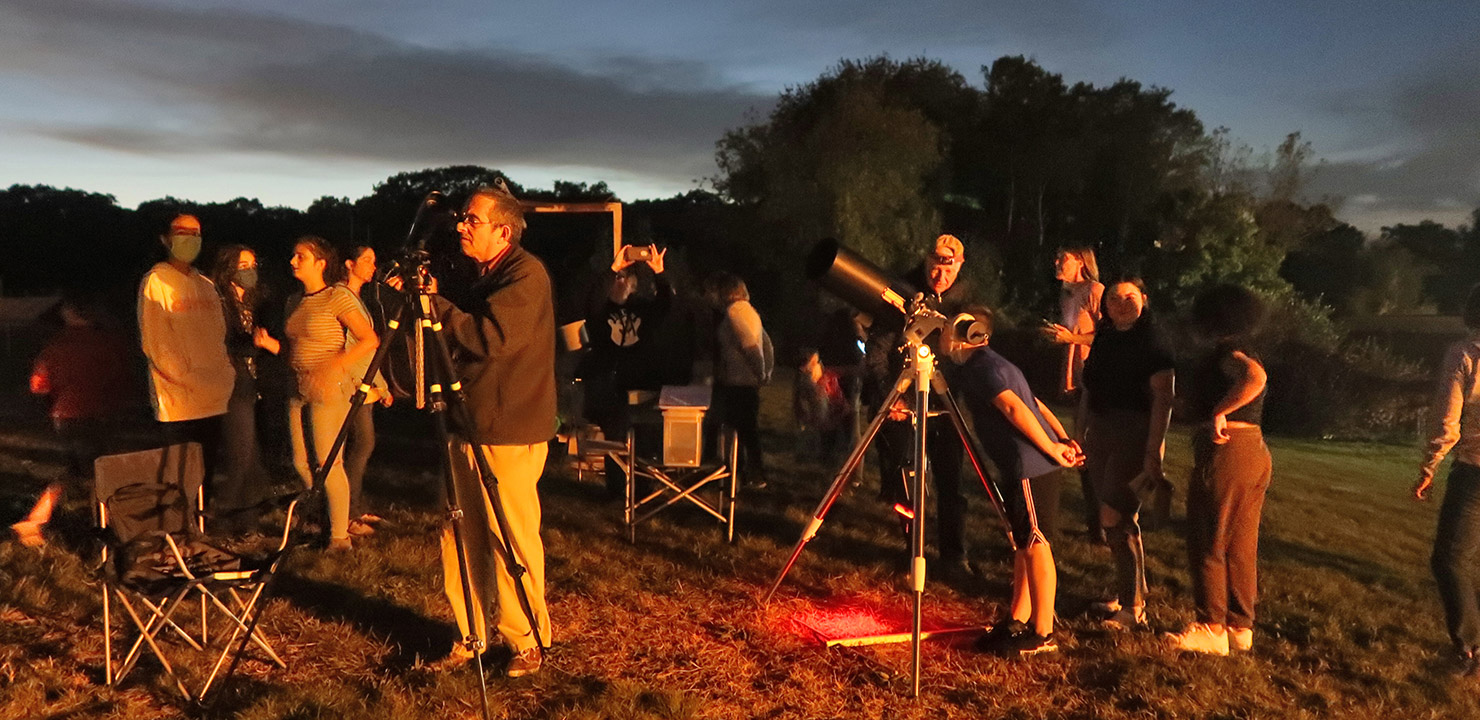
Winman Middle School Lantern Night
by Jim Hendrickson
At the invitation of Cathy Hawthorne-Kocak from the Winman Middle School’s STEAM lab, Skyscrapers participated in a night sky event at the Winman Middle School in Warwick for the second consecutive year (the first event was held in February 2020). The night sky program was part of their Lantern Night, which also included a night hike and other activity stations. The event was timed to coincide with the Full Hunter’s Moon.
Present from Skyscrapers were Francine Jackson, Jim Hendrickson, Bob Janus, Mark Munkacsy, Ron Zincone and Heidi Morgan with telescopes ranging in size from Ron and Heidi’s 60mm Tele Vue refractor to Mark’s 6-inch home-built Dobsonian.
Before sunset, we set up on the practice field on the hill behind the school, which offered clear views to the west, southwest and southeast. Early weather conditions were favorable, with light cloud bands to the west, and a thicker bank to the east, which would partially obscure Moonrise.
There were about 200 in attendance, including middle-schoolers and their families, and were organized in groups that rotated through the different activities. This made the group size very manageable and the visitors were able to take their time.
Sky conditions did improve after sunset, and the entire south and southwestern sky were clear. A thin wisp of cloud in the west gave color to the twilight sky. Venus became visible early and we could clearly see its “quarter Moon” phase. Many viewers were surprised at how bright it was and some didn’t realize they were looking at a planet until they looked at it through the telescopes. Jupiter and Saturn soon began poking through the deepening twilight. Two of Jupiter’s moons, Ganymede and Europa, were clearly visible on opposite sides of the planet, and early in the evening, Callisto and Io passed in front of Jupiter’s limb. Both Bob’s and Mark’s scopes were pointed at Saturn for much of the evening, which definitely attracted the most attention.
The Full Moon rose behind the cloud band to the east at 6:13pm, but its golden light could easily be seen through some gaps, until about 30 minutes later, when its full disk became visible.
Given the bright sky conditions, and that there were bright lights on the back of the school building, we were limited to viewing the bright objects, but Full Moon nights do make for memorable astronomy nights, and everyone enjoyed seeing three planets, many for the first time. The event concluded just after 8pm and there were discussions about participating again in 2022.



